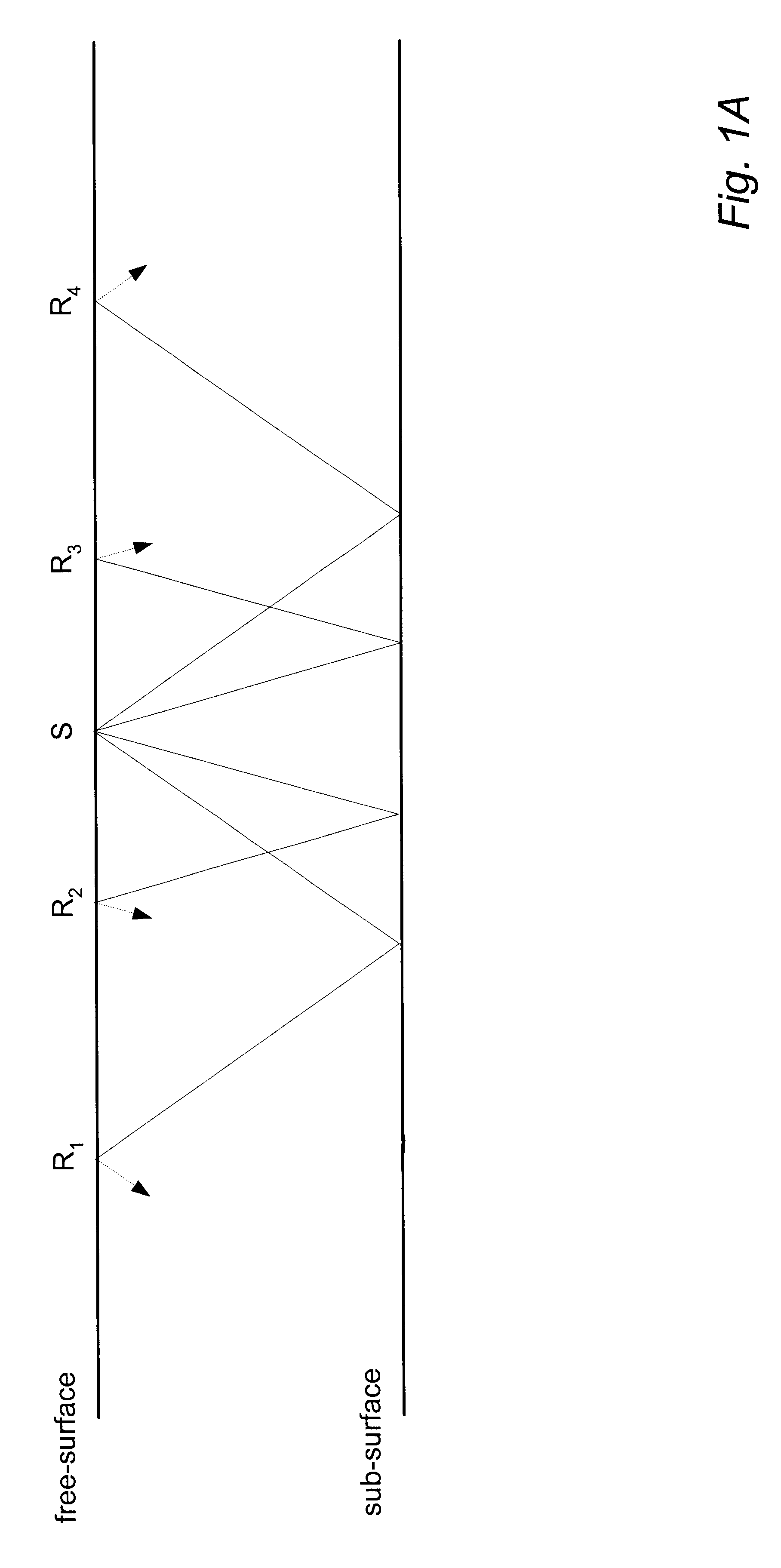3-D prestack/poststack multiple prediction
a technology of prestack and multiple prediction, applied in the field of seismic exploration, can solve the problems of the type of field acquisition, and the inability to accurately predict the number of multiples, etc., and achieve the goal of overcoming the severe aperture limit of real world data acquisition
- Summary
- Abstract
- Description
- Claims
- Application Information
AI Technical Summary
Problems solved by technology
Method used
Image
Examples
Embodiment Construction
Incorporation by Reference
The Doctoral Thesis titled "3D Surface-Related Multiple Prediction" by Ewoud Jan van Dedem, ISBN 90-9015530-9, Copyright.COPYRGT. 2002 by E. J. van Dedem, Delft University of Technology, Delft, The Netherlands, is hereby incorporated by reference in its entirety, as though fully and completely set forth herein.
"Practical aspects in the determination of 3-D stacking velocities" by Lehmann, H. J., and Houba, W., 1985, Geophysical Prospecting, v. 33, pp. 34-51 is hereby incorporated by reference in its entirety, as though fully and completely set forth herein.
"The Sectional Autocorrelogram and the Sectional Retrocorrelogram" by Anstey and Newman, 1966, Geophysical Prospecting, v. 14, pp. 389-426, is hereby incorporated by reference in its entirety, as though fully and completely set forth herein.
FIG. 5--System for Analyzing Seismic Data
FIG. 5 illustrates a system 100 for analyzing seismic data according to one set of embodiments of the invention. As FIG. 5 sho...
PUM
 Login to View More
Login to View More Abstract
Description
Claims
Application Information
 Login to View More
Login to View More - R&D
- Intellectual Property
- Life Sciences
- Materials
- Tech Scout
- Unparalleled Data Quality
- Higher Quality Content
- 60% Fewer Hallucinations
Browse by: Latest US Patents, China's latest patents, Technical Efficacy Thesaurus, Application Domain, Technology Topic, Popular Technical Reports.
© 2025 PatSnap. All rights reserved.Legal|Privacy policy|Modern Slavery Act Transparency Statement|Sitemap|About US| Contact US: help@patsnap.com



